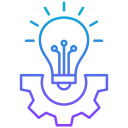Design, Comfort, and Fashion
Even a few extra grams matter on the bridge of your nose. Smart distribution—battery in the temples, lighter optics up front—reduces pressure points. Venting and soft nose pads help during warm commutes. Share your longest comfortable wear time before fatigue sets in.
Design, Comfort, and Fashion
Early models looked techy; the future looks like fashion—acetate, titanium, or recycled composites with interchangeable fronts. Prescription-ready lenses and sun tints turn utility into wardrobe. Post a frame style you love, and we’ll explore how it could hide sensors gracefully.








